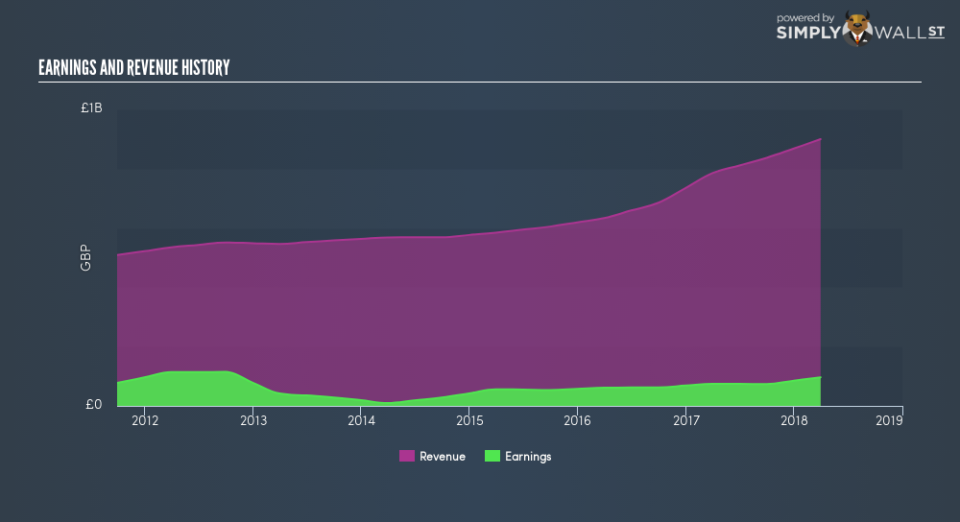Where HomeServe plc (LON:HSV) Stands In Terms Of Earnings Growth Against Its Industry

After reading HomeServe plc’s (LON:HSV) most recent earnings announcement (31 March 2018), I found it useful to look back at how the company has performed in the past and compare this against the latest numbers. As a long-term investor I tend to focus on earnings trend, rather than a single number at one point in time. Also, comparing it against an industry benchmark to understand whether it outperformed, or is simply riding an industry wave, is a crucial aspect. Below is a brief commentary on my key takeaways.
See our latest analysis for HomeServe
Did HSV’s recent earnings growth beat the long-term trend and the industry?
HSV’s trailing twelve-month earnings (from 31 March 2018) of UK£96.3m has jumped 29.4% compared to the previous year. Furthermore, this one-year growth rate has exceeded its 5-year annual growth average of -1.3%, indicating the rate at which HSV is growing has accelerated. What’s enabled this growth? Let’s take a look at if it is merely because of an industry uplift, or if HomeServe has seen some company-specific growth.
In the past few years, HomeServe top-line expansion has outstripped earnings and the growth rate of expenses. Though this has caused a margin contraction, it has softened HomeServe’s earnings contraction. Inspecting growth from a sector-level, the UK commercial services industry has been growing, albeit, at a muted single-digit rate of 4.3% in the past year, and a substantial 17.5% over the past half a decade. This growth is a median of profitable companies of 19 Commercial Services companies in GB including AssetCo, Rentokil Initial and Premier Technical Services Group. This means whatever near-term headwind the industry is experiencing, HomeServe is less exposed compared to its peers.
In terms of returns from investment, HomeServe has fallen short of achieving a 20% return on equity (ROE), recording 17.4% instead. However, its return on assets (ROA) of 7.5% exceeds the GB Commercial Services industry of 5.4%, indicating HomeServe has used its assets more efficiently. And finally, its return on capital (ROC), which also accounts for HomeServe’s debt level, has increased over the past 3 years from 14.2% to 14.9%.
What does this mean?
Though HomeServe’s past data is helpful, it is only one aspect of my investment thesis. Positive growth and profitability are what investors like to see in a company’s track record, but how do we properly assess sustainability? I suggest you continue to research HomeServe to get a more holistic view of the stock by looking at:
Future Outlook: What are well-informed industry analysts predicting for HSV’s future growth? Take a look at our free research report of analyst consensus for HSV’s outlook.
Financial Health: Are HSV’s operations financially sustainable? Balance sheets can be hard to analyze, which is why we’ve done it for you. Check out our financial health checks here.
Other High-Performing Stocks: Are there other stocks that provide better prospects with proven track records? Explore our free list of these great stocks here.
NB: Figures in this article are calculated using data from the trailing twelve months from 31 March 2018. This may not be consistent with full year annual report figures.
To help readers see past the short term volatility of the financial market, we aim to bring you a long-term focused research analysis purely driven by fundamental data. Note that our analysis does not factor in the latest price-sensitive company announcements.
The author is an independent contributor and at the time of publication had no position in the stocks mentioned. For errors that warrant correction please contact the editor at editorial-team@simplywallst.com.

 Yahoo Finance
Yahoo Finance 
